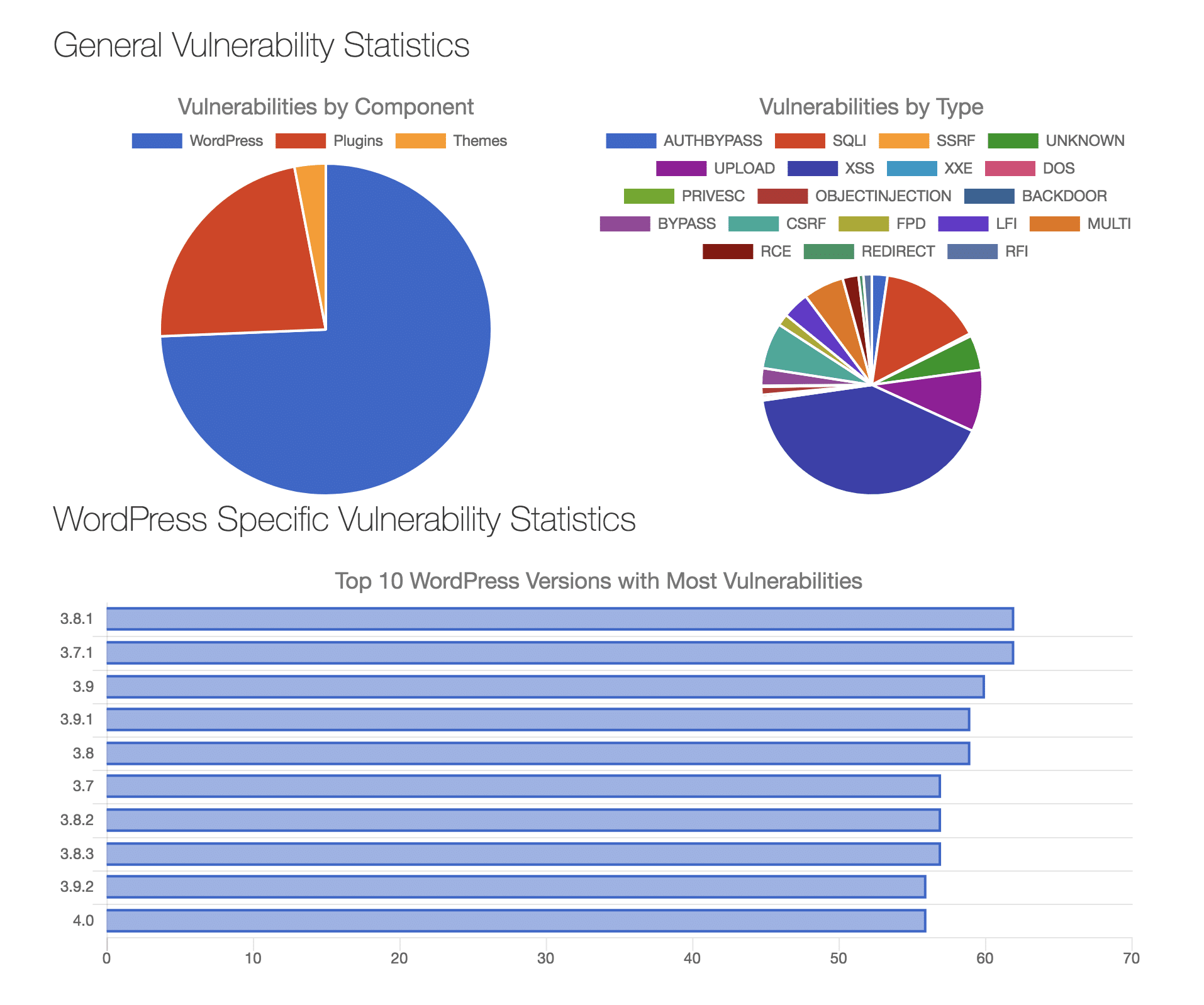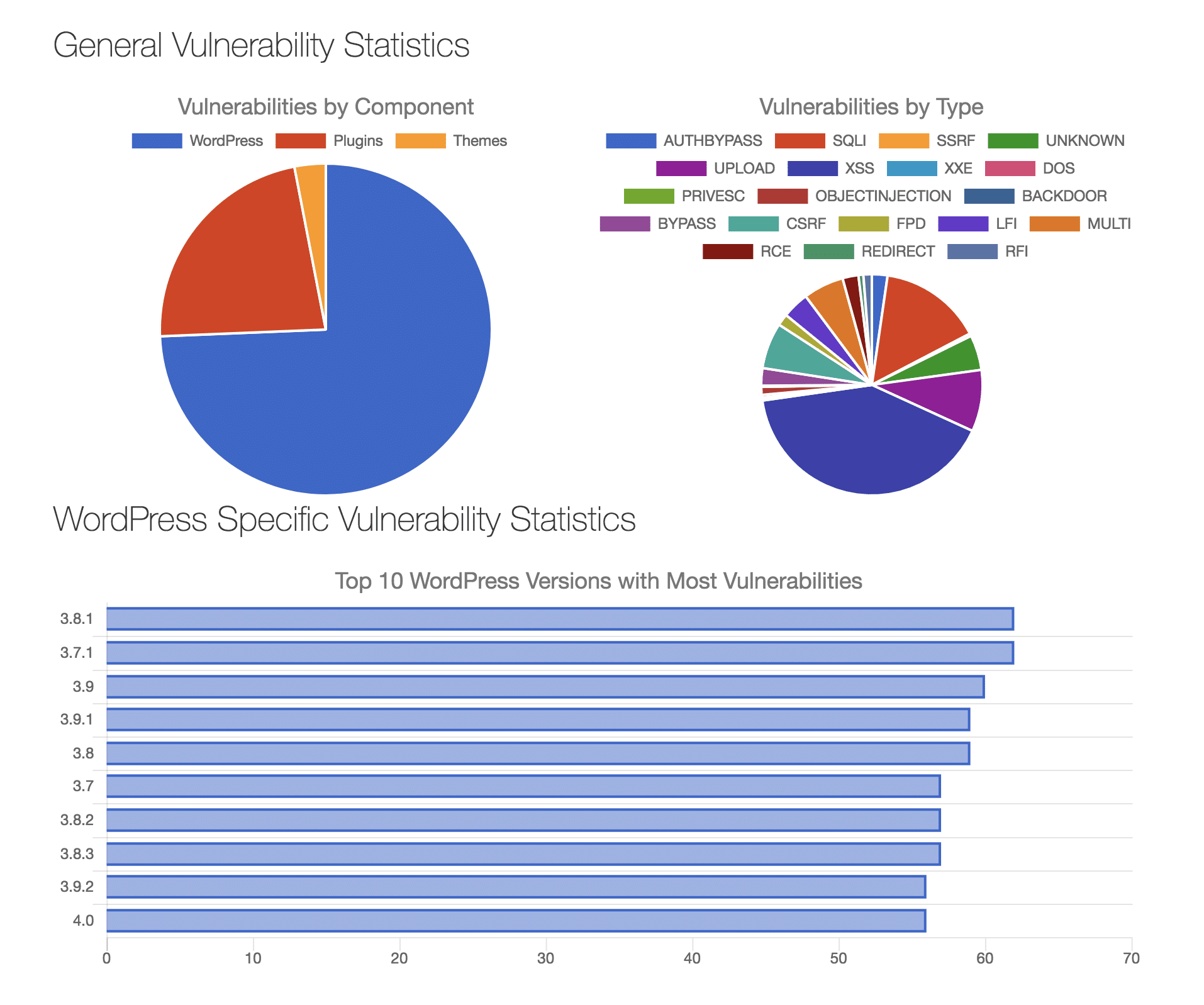
2024-1-3 20:24:43 Author: securityboulevard.com(查看原文) 阅读量:7 收藏
WordPress: The Ubiquitous CMS
WordPress stands as a colossus in the world of Content Management Systems(CMS), powering an astonishing segment of the web. From small personal blogs to sprawling e-commerce sites, WordPress’s flexibility and user-friendly interface have cemented its status as the go-to platform for web development. However, its popularity comes with a price – it’s a prime target for cyber threats. The very aspects that make WordPress favored among users, like its extensive plugin ecosystem and theme customizability, also open doors to potential vulnerabilities.
Why do you need WordPress Security?
With great power comes great responsibility, and in the case of WordPress, this translates to the imperative need for stringent security measures. Why? Because the impact of a security breach can be catastrophic – from data theft and financial loss to reputational damage and legal repercussions. We’re not just talking about big corporations; even small websites can fall prey to attacks, turning them into unwilling participants in malicious activities like spam distribution or part of a botnet.
Common WordPress Vulnerabilities
Prioritizing WordPress security isn’t just a techy nicety; it’s a crucial step in ensuring your website’s stability, reputation, and user trust. Breaches can lead to stolen data, compromised accounts, and even website defacement – all leaving a lasting scar on your online presence. Here is the list of the top 14 WordPress Vulnerabilities-
1. Outdated Core Software
The heart of WordPress, its core software, is a masterpiece of continuous development, but it’s also a prime target for attackers when left outdated. Regular updates are more than just feature enhancements; they’re crucial for patching security vulnerabilities. According to Sucuri, over half of infected WordPress sites were running outdated core software. This is a fundamental flaw; failing to update is akin to leaving your front door unlocked in a high-crime area. Sucuri Report
2. Outdated Themes and Plugins
The beauty of WordPress lies in its customizability through themes and plugins. But here’s the kicker: they can be Achilles’ heels if not updated. WPScan data suggests about 97% of vulnerabilities are in plugins and themes. The risk? An outdated plugin can serve as a hacker’s VIP pass into your site. WPScan Vulnerability Database
3. Malware
Malware in WordPress is like termites in wood – it can eat away at your site’s health without you noticing. Malware can range from backdoor files to code injections, with Sucuri reporting that 61.65% of remediated websites were infected with malware in 2021. Regular security scans are essential to spot and squash these bugs. Sucuri Report
4. Credit Card Skimming
This is a nefarious one. Skimmers are malware that thieves use to steal credit card data from unsuspecting customers. Imagine a virtual pickpocket on your checkout page. Santoyo from Sucuri noted a worrying trend in WordPress sites being targeted for skimming. Sucuri Blog
5. Unauthorized Logins
Brute-force attacks – the digital equivalent of trying every key on a keyring – are common in WordPress. These attacks exploit predictable usernames and passwords, emphasizing the need for robust password policies and two-factor authentication. NordPass
6. Undefined User Roles
In WordPress, power comes with user roles. Failing to define these roles properly is like giving out master keys to your site. An unauthorized user with admin access can wreak havoc, from data theft to website defacement. It’s about balancing accessibility and security.
7. SQL Injections
SQL injections are as menacing as they sound. Attackers can manipulate your database through these injections, leading to data breaches or compromised sites. These often occur through vulnerable input fields, like forms or URL parameters. Restrictive input handling and regular security audits are key defenses. OWASP
8. SEO Spam
It’s not just about annoying ads; SEO spam can seriously harm your site’s reputation and search rankings. Hackers insert spammy keywords and links, turning your site into a billboard for dubious products. Regular monitoring and updating of software can help keep these spammers at bay.
9. Cross-Site Scripting (XSS)
XSS attacks involve injecting malicious scripts into your web pages, which can then affect your users. This is particularly dangerous because it targets your site’s visitors directly, potentially stealing their data or corrupting their browsing experience. Vigilant plugin management and employing a Web Application Firewall (WAF) are effective countermeasures.
10. Denial-of-Service (DoS) Attacks
DoS attacks flood your website with traffic to crash it. It’s digital vandalism that can render your site inaccessible. The key? Robust hosting with built-in DDoS mitigation tools. Remember, an ounce of prevention is worth a pound of cure. WP Engine
11. Phishing
Phishing in WordPress can be subtle – a rogue plugin, a deceitful admin user. It’s like a digital con artist tricking you into giving away sensitive information. Educating users and implementing security measures to detect unusual activities are crucial.
12. Supply Chain Attacks
These are the digital equivalent of a Trojan horse. Attackers compromise a trusted source (like a plugin developer) to distribute malicious code. Regularly vetting your supply chain and monitoring for anomalies can help mitigate these risks.
13. Hotlinking
Hotlinking might not seem like a security issue, but it can be used maliciously to steal bandwidth and potentially deliver malicious content. Implementing measures to prevent hotlinking is a smart move.
14. Cross-Site Request Forgery (CSRF)
CSRF tricks users into performing actions they didn’t intend to on your website. It’s a form of digital sleight of hand that can result in data breaches or compromised accounts. Token-based defenses are a must to counteract CSRF attacks.

Source: WPScan list of known vulnerabilities
Mitigation Strategies for WordPress Vulnerabilities: Best Practices for Securing WordPress Websites
1. Regular Updates
WordPress security starts with updates. Keep core, themes, and plugins fresh. Each update potentially fixes known vulnerabilities. It’s like updating your immune system against the latest virus.
2. Strong Passwords and User Management
Implement robust passwords and manage user roles judiciously. Tools like 1Password or LastPass can manage complex passwords. Assign user roles wisely – not everyone needs admin access.
3. Implementing HTTPS
Secure your data transmission using HTTPS. This encrypts the data exchanged between your website and its visitors, safeguarding sensitive information.
4. Regular Backups
Regular backups are a safety net. Tools like UpdraftPlus or VaultPress can automate this process. If something goes awry, you have a fallback.
5. Security Plugins
Invest in quality security plugins. They can scan for malware, monitor for suspicious activity, and reinforce your site. Wordfence and Sucuri Security are popular choices.
Technical Settings and Configurations to Enhance Security
1. Configuring Web Application Firewall (WAF)
A WAF like Cloudflare can filter and monitor web traffic, blocking malicious requests.
2. Disabling File Editing
In the WordPress dashboard, disable the file editing feature. This prevents attackers from modifying your PHP files even if they gain access to your wp-admin.
3. Database Prefix Change
Change the default WordPress database prefix (wp_). This is a small step but can deter SQL injection attacks.
4. Role of Regular Updates and Maintenance
Security Through Obscurity: Regularly updating and maintaining your site is like staying healthy; it prevents many common ailments. It’s not just about patching holes; it’s about staying ahead of potential threats.
WeSecureApp: Enhancing WordPress Security
WeSecureApp – a name that’s become synonymous with cutting-edge cybersecurity solutions. With a comprehensive understanding of the digital threat landscape, WeSecureApp specializes in turning WordPress’s vulnerabilities into fortresses of digital security. Their approach isn’t just about putting up a firewall or running a malware scan; it’s a holistic strategy encompassing risk assessment, continuous monitoring, and proactive defense mechanisms tailored to WordPress’s unique environment.
WeSecureApp’s expertise in cybersecurity offers WordPress users peace of mind, knowing their sites are not just running but fortified against the myriad of threats lurking in the digital shadows. By aligning with WeSecureApp, WordPress administrators can focus on what they do best – creating and managing content – while leaving the intricate task of security to the experts.
In the following sections, we’ll dive deep into the common vulnerabilities plaguing WordPress sites, analyze their impact, and explore how WeSecureApp’s robust security solutions can help mitigate these risks, keeping your digital presence safe and sound.
Role of WeSecureApp in Mitigating WordPress Vulnerabilities
1. Comprehensive Security Audits
WeSecureApp starts with a thorough assessment of your WordPress site, identifying vulnerabilities from outdated plugins to weak passwords.
2. Customized Security Solutions
Based on the audit, WeSecureApp provides tailored solutions. This could range from auditing specific security plugins to helping you reconfigure server settings.
3. Continuous Monitoring and Support
Post-implementation, WeSecureApp offers ongoing monitoring and support, ensuring that any new threats are quickly identified and neutralized.
Advanced Security Measures for WordPress
1. Web Application Firewalls (WAF)
A WAF serves as a gatekeeper, filtering incoming traffic and blocking malicious requests. Services like Cloudflare and Sucuri provide robust WAF solutions that can be critical in defending against various web attacks.
2. Selecting the Right Security Plugins
Security plugins act as vigilant sentinels. Plugins like Wordfence offer features like endpoint firewalls and malware scanners, while iThemes Security provides 30+ ways to secure and protect your WordPress site. The trick is to choose plugins that suit your specific needs.
3. Choosing Secure Hosting
Not all hosting services are created equal, especially concerning security. Opt for hosts that offer built-in security enhancements. For instance, WP Engine provides managed hosting with advanced security features.
4. SSL/TLS Encryption: A Non-Negotiable Layer
Implementing SSL/TLS is no longer optional; it’s a necessity. This encryption layer secures the data transmitted between your website and its users. SSL certificates can be obtained through your hosting provider or platforms like Let’s Encrypt.
Regular Audits and Penetration Testing
1. Routine Security Audits
Conducting regular security audits helps in identifying and rectifying vulnerabilities before they are exploited. Tools like WPScan can automate some of these audits.
2. Penetration Testing
Penetration testing involves simulating cyber attacks to evaluate the security of your system. Engaging with services like WeSecureApp’s Pen Testing can provide deep insights into potential vulnerabilities.
Fortifying WordPress, Fortifying Trust
WordPress security is not just about safeguarding data; it’s about fortifying trust. Every security breach erodes the confidence of users and customers. Implementing robust security measures and staying vigilant is not just a technical necessity but a business imperative.
As we’ve seen, services like WeSecureApp play a pivotal role in this arena. They bring expertise, technology, and proactive strategies to the table, transforming WordPress from a potential victim to a fortress of digital security. Remember, the cost of implementing security measures is always less than the cost of a security breach. Stay safe, stay secure.
Recommended Reading
Penetration Testing for Sensitive Data Exposure in Enterprise Networks
How to Choose a Penetration Testing Vendor Wisely?
A simple entry point can lead to Server Compromise
The post WordPress Security: How to Secure Your Website? appeared first on WeSecureApp :: Simplifying Enterprise Security.
*** This is a Security Bloggers Network syndicated blog from WeSecureApp :: Simplifying Enterprise Security authored by Akhil Reni. Read the original post at: https://wesecureapp.com/blog/wordpress-security-how-to-secure-your-website/
如有侵权请联系:admin#unsafe.sh